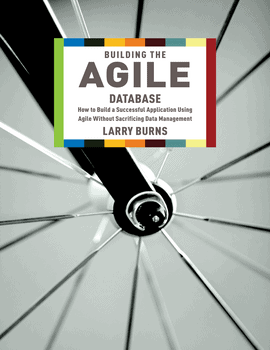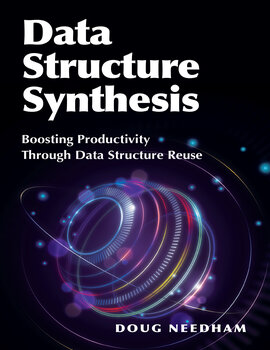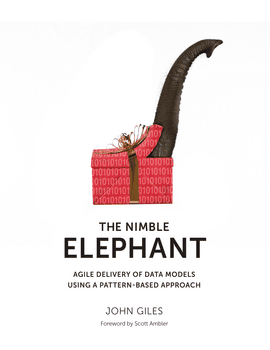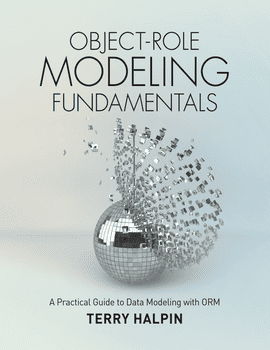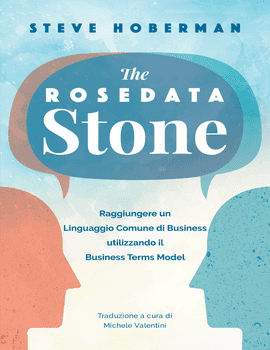Building the Agile Database
Building the Agile Database: How to Build a Successful Application Using Agile Without Sacrificing Data Management, by Larry Burns
This book explains how to work with application developers and other stakeholders, examines critical issues in Agile Development and Data Management, and describes how developers and data professionals can work together to make Agile projects successful while delivering maximum value data to the enterprise.
Topics
CHAPTER 1: Taking the Business View
The Importance of Stakeholders
The Economics of Application Development
The Role of Business Data Management
CHAPTER 2: Agile Explained
The Importance of Agility
Agile Development Explained
Implications of an Agile Approach
Critical Issues in Agile Development
A Building or a Garden?
Agile vs. Software Engineering
CHAPTER 3: Agile Data Management
PRISM: The 5 Principles of Data Management
Agile Data Management
What is a Database?
In Defense of the “Intelligent” Database
CHAPTER 4: Data Management Roles and Responsibilities
The Art of Data Management
The Data Manager Role
The Data Analyst Role
The Database Developer Role
The Database Administrator Role
The Data Steward Role
The Data Development Cycle
Data Managers as Intermediaries
Database Development Tasks
The Evolution of Data Management
CHAPTER 5: Managing the Logical-Physical Divide
The Object-Relational Impedance Mismatch
Sources of Confusion
The Virtual Data Layer
The Virtual Data Layer in Action
CHAPTER 6: Agile Data Design
The Focus of Data Design
The Cost of Losing Focus
How Much Design is “Just Enough”?
The Purpose of Normalization in Logical Design
When to do Data Design
CHAPTER 7: Agile Database Design
The Focus of Database Design
The Physical Design Process
Database Design Deliverables
How Much Should You Implement?
The Purpose of Normalization in Physical Design
When Should You Denormalize?
When Shouldn’t You Denormalize?
Normalization “After the Fact”
When to do Physical Design
Moving From the Logical to the Physical
CHAPTER 8: Agile Modeling and Documentation
What is an “Agile Model”?
Is the Logical Data Model an “Agile Model”?
Is the Physical Database Model an “Agile Model”?
Agile Documentation
CHAPTER 9: Building the Agile Database
Abstraction and Encapsulation
Cohesion and Coupling
Virtualizing the Database
Views
Stored Procedures
Fundamental Stored Procedures
Triggers
Functions
Work Tables and Materialized Views
Application Data Objects
Complex Datatypes
Standards for Database Coding
What Should Go Where?
Testing and Diagnostics
Optimizing Performance
CHAPTER 10: Refactoring Made Easier
Managing Change
Determining Where and How to Change
Refactoring the Logical Model
Refactoring the Physical Design
Refactoring the Database Schema
Refactoring the Virtual Data Layer
Refactoring Data
An Example of Multi-Level Refactoring
CHAPTER 11: Developing an Agile Attitude
The Three Agile Attitudes
Agile in the Organization
CHAPTER 12: Sales Option Management Application
Description of the Problem
Pre-Development Activities
Development Activities
Post-Development Activities
Is fast development the enemy of good development? Not necessarily. Agile development requires that databases are designed and built quickly enough to meet fast-based delivery schedules – but in a way that also delivers maximum business value and reuse. How can these requirements both be satisfied? This book, suitable for practitioners at all levels, will explain how to design and build enterprise-quality high-value databases within the constraints of an Agile project.
Starting with an overview of the business case for good data management practices, the book defines the various stakeholder groups involved in the software development process, explains the economics of software development (including “time to market” vs. “time to money”), and describes an approach to Agile database development based on the five PRISM principles.
Building the Agile Database will serve as an excellent reference for application developers, data managers, DBAs, project managers, Scrum Masters and IT managers looking to get more value from their development efforts. Among the topics covered:
- Why Agile is more than just the latest development fad
- The critical distinction between the logical and physical views of data
- The importance of data virtualization, and how to achieve it
- How to eliminate the “object-relational impedance mismatch”
- The difference between logical modeling and physical design
- Why databases are more than “persistence engines”
- When and how to do logical modeling and physical design
- Use of the logical data model in model-driven development
- Refactoring made easier
- Developing an “Agile Attitude”
Michael Tozer’s review on TDAN.com | IT Business Edge review
About Larry
Larry Burns has worked in IT for more than 25 years as a database administrator, application developer, consultant and teacher. He currently works for a global Fortune 500 company as a database developer on numerous software development projects, and teaches a series of data management classes for application developers. He was a contributor to DAMA International’s Data Management Body of Knowledge (DAMA-DMBOK), and is a former instructor and advisor in the certificate program for Data Resource Management at the University of Washington in Seattle.
Faculty may request complimentary digital desk copies
Please complete all fields.
